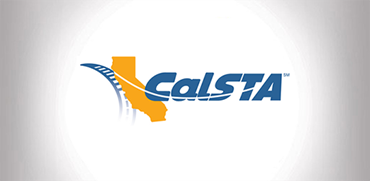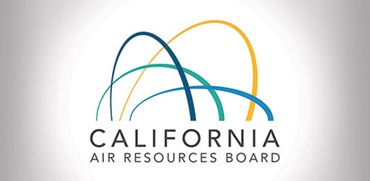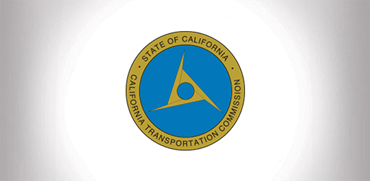Corridor and System Planning
The Office of Corridor and System Planning supports the development and implementation of statewide plans, multimodal corridor plans as well as project development and operational improvements through policies, procedures, tools, analysis, training, and technical assistance.
Interregional Transportation Strategic Plan
The Interregional Transportation Strategic Plan (ITSP) provides direction to programs, districts, and partner agencies on the policies and strategies that should be considered when assessing the interregional transportation system and identifying improvements. The ITSP also provides policy direction for the development of the Interregional Transportation Improvement Program (ITIP).
Accessibility Assistance: Caltrans makes every attempt to ensure our documents are accessible. Due to variances between assistive technologies, there may be portions of this document which are not accessible. Where documents cannot be made accessible, we are committed to providing alternative access to the content. Should you need additional assistance, please contact us at (916) 654-2852 or visit https://dot.ca.gov/request-ada-compliant-documents.
2022 ITSP Addendum
The Interregional Transportation Strategic Plan (ITSP) Addendum builds on the 2021 ITSP by providing more information on the needs of each strategic interregional corridor. The Addendum tailors the ITSP’s statewide strategies to suit the unique needs of California’s diverse regions. It also provides regional context for the new topics added in the 2021 ITSP, including racial equity, public health, climate resilience, and single-occupancy vehicle trip reduction. In doing so, this Addendum is a tool for future state, regional, local, and corridor plans; and investment in the Interregional Transportation Improvement Program (ITIP).
The Final ITSP Addendum was released January 11, 2023.
Please send comments to our Office Chief at roy.abboud@dot.ca.gov.
Past Plans
23 U.S.C. 135 - Statewide and nonmetropolitan transportation planning: Defines required statewide transportation planning practices and processes.
California Government Code Section 65086 (Transportation Planning and Programming): The Department of Transportation, in consultation with transportation planning agencies, county transportation commissions, counties, and cities, shall carry out long-term state highway system planning to identify future highway improvements.
Executive Order N-19-19 (2019): Governor signed an executive order requiring every aspect of state government to redouble its efforts to reduce greenhouse gas emissions and mitigate the impacts of climate change while building a sustainable, inclusive economy.
Project Initiation
- State-Sponsored PID Project Nomination Guidance (PDF)
- State-Sponsored PID Scoring Rubric 2022 (PDF)
- Local-Sponsored PID Alignment Guidance (PDF)
- Appendix A: Project Conceptual Alignment Table (PDF)
- Appendix B: Locally Sponsored PID Project Intake Form
For a list of Frequently asked questions, click here
Caltrans Corridor Planning Process Guide
The Caltrans Corridor Planning Process Guide (Guide) was prepared for the California Department of Transportation (Caltrans) by the Division of Transportation Planning for use in preparing corridor planning documents. This Guide establishes a comprehensive planning approach through desired protocols and procedures to identify and implement multimodal transportation needs. It is neither intended as nor does it establish, a legal standard for these functions.
Emphasis Area Guides
These are supplementary guides to the Corridor Planning Process Guide that provides additional information and guidance on specific emphasis areas and planning topics. Please select or click on the link below to access the EA guide:
Planning for Operations Strategic Work Plan
Planning for Operations is a concept meant to promote multimodal planning that supports transportation system management and operations. System management strategies typically have high benefit/cost ratios and help Caltrans achieve its goals of system performance, stewardship, safety, and operational efficiency. New and evolving federal and State policies direct Caltrans to improve its system management planning practices as a basis for performance-based decision-making. Intelligent Transportation Systems (ITS) planning and deployment is an important component of Planning for Operations activities.
This project developed a statewide framework for planning for operations at Caltrans. This was accomplished by developing and coordinating processes for integrating Caltrans’ mission, vision, and goals into multi-modal planning for operations activities, as well as providing an action plan with goals, steps, roles, and responsibilities. The outcome of implementing this Strategic Work Plan will be improvements in Caltrans business practices to deliver safe, sustainable, and efficient operational strategies system-wide over the long term.
District System Management Plan Guidelines
The District System Management Plan (DSMP) is a long-range (20 year) strategic and policy planning document that presents the long-range goals, policies, and programs the district intends to follow in maintaining, managing, and developing the transportation system. It serves as a resource for informing federal, state, regional, and local agencies, and the public and private sector of the plans the district intends to follow in its partnership role with local and regional agencies.
- District System Management Plan Guidelines (PDF)* - Under Development
Relinquishment Assessment Report (RAR) Guidelines
Relinquishment is the act and the process of legally transferring property rights, title, liability, and maintenance responsibilities of a portion or entirety of a state highway or a park-and-ride lot to another entity. The removal of a highway or associated facilities, either in whole or in part, from the State Highway System (SHS) requires approval by the California Transportation Commission (CTC). The Relinquishment Assessment Report (RAR) is the initial step in the Relinquishment process for legislative enactment type relinquishments and relinquishment of park-and-ride lots.
There are four types of relinquishments:
- relinquishment of a State Route or portion of a State Route by legislative enactment
- relinquishment of a State Route by superseding with a new State Route
- relinquishment of collateral facilities (including park-and-ride lots)
- relinquishment of non-motorized transportation facilities
- Relinquishment Assessment Report Guidelines (PDF)*
Featured Links
Latest Updates
For questions and the latest Corridor and System Planning Office updates, please email our team and see contacts below.
For Caltrans System Investment Strategy (CSIS) updates, please email CSIS@dot.ca.gov
For the Corridor Planning Process Guide and Corridor Plan updates, please email CaltransCorridorPlanning@dot.ca.gov
For Interregional Transportation Strategic Plan (ITSP) updates, please email ITSP@dot.ca.gov
For locally sponsored Non-SHOPP PIDs updates, please email ocsp-pid@dot.ca.gov
Frequently Asked Questions (FAQs)
Related Links
Contacts
Alyssa Begley Office Chief (Acting), Corridor and System Planning
Binoy Alexander, PID Nomination Program Manager
Bryce Goldstein, Corridor Planning Program Manager
Florigna Feliciano, Branch Chief, Corridor & System Planning
Ruchita Acharya, Interregional Program Manager, Corridor & System Planning
Meenaxi Raval, CSIS Program Manager




